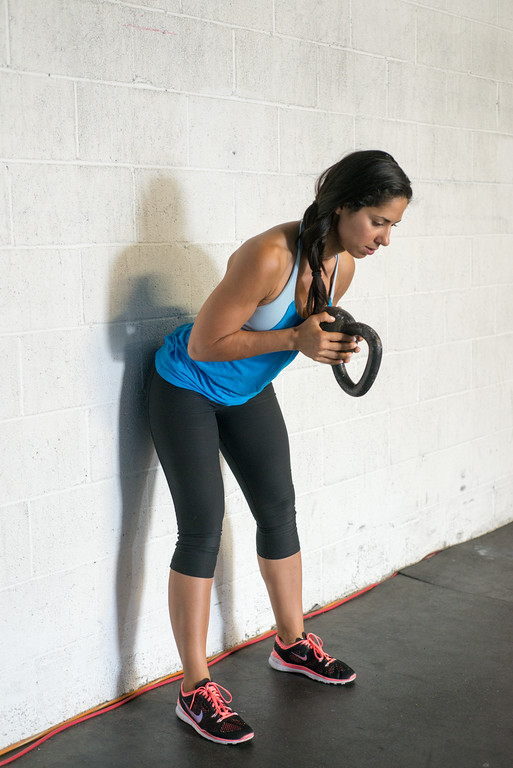There was a time that I lost my fitness mojo and feared I’d never get it back. I hated going to the gym, didn’t want to follow any program, and was bored out of my mind.
This went on for two years! In that time, I worked with a personal trainer until I could no longer afford it. I followed another coach’s program online and tried new fitness classes until it no longer worked with my schedule.
As a trainer, I know what works in the weight room, but I also know that what works can get really friggin’ stale once you’ve been at it for a long, long, long time.
My clients in particular are likely to experience the same thing if they’ve been with me for a couple of years, so it’s my job to spice up their programming in subtle but effective ways so that
a) They get results
b) Never leave me*
c) Get results
*This is not a real concern. I aim to educate clients so that when they are ready to leave, they feel confident & capable in training on their own
I’ve said this many times over, and will repeat it again:
Progress comes from doing the boring, foundational basics again and again over a long period of time
In other words, learning how to squat, hinge, push, pull, lunge, and carry will always form the basis of any strength training program, but that doesn’t mean we can’t spice up the basics to make training more fun, interesting, and effective.
No, I’m not talking about adding BOSUs, burpees, and back flips to your workout routine. I’m talking about these four subtle yet “spicy” changes to your programming that will keep you mentally stimulated while producing mega results you’re proud of!
Contrast Sets
Best for: Muscle growth, busting through a hypertrophy plateau, explosiveness and conditioning
I first learned about contrast set training from coach Lee Boyce through Instagram (where I get most of my #fakenews but also useful news like this one). In layman terms, a contrast set consists of one loaded movement immediately followed by a similar unloaded movement. For example, a barbell squat followed by jump squats, or a bench press followed by a plyometric push-up. As Lee explains:
This second effort will “trick” the fast-twitch muscle fibers and their high-threshold motor units into over-firing, since they are needed to recruit more wholly to move the heavy load that just preceded it. It’s a way to get much more out of every set.
Ideally, the first lift is a compound lift and is done at the start of the workout when you’re feeling fresh. A contrast set is for the advanced trainee and should be used sparingly throughout the year.
Density Sets
Best for: Fat loss while maintaining muscle mass
The brilliance of density sets lies in its brutal simplicity. Basically, it’s how much work (or volume) you do within a certain amount of time, and it can be infused in different ways to keep your fitness mojo going. For instance, if you complete 12 sets of 10 bodyweight squats in 10 minutes, then your total number of squats during the allotted time is 120 squats.
I was first introduced to density sets by my homeboy and strength coach Mike Anderson of Anderson Strength and Fitness in Ohio. I remember hating every second of it (12 minutes felt like an hour) but also sort-of enjoying how challenging and sweaty it was. It’s a bit of a love/hate relationship, but lately I started using it with a few select clients who are focused on fat loss but want to maintain all the gains we’ve achieved.
A couple of tips to get you started:
- Pick 2 exercises with non-competing muscle groups to start. For example, a glute bridge followed by a push-up. This allows one muscle group to recover a bit while you attack the other
- Start with an 8-minute density set, and work your way up. I’ve used 10, 12, and 15-minute density sets before, but for beginners, it’s best to start on the conservative side.
- Stick to a conservative load. Pressing 20 pound dumbbells overhead may be a walk in the park for you normally, but when volume is the goal, it’s best to scale back the weight and be a bit more conservative. Sure, you want to work hard, but you don’t want to go to failure every set.
- Stay away from technical movements in the beginning. Look, density work is tough, and you’re likely to get very tired…quickly. With that in mind, stay away from the exercises you’re most likely to break down in as you fatigue. For example, I never use deadlift variations in a density set because the risk of someone getting tired and losing their form is too high. Safety should always come first.
Stacks & Ladders
Best for: Hypertrophy, efficiency, conditioning (for stack schemes)
Stacks & Ladder rep schemes are a more engaging way to program reps and sets outside the normal superset or circuit style.
In a stack, you complete the same number of repititons every set, but each time you add another exercise. For example, let’s say you have 5 exercises, all 10 reps each:
- Squat
- RDL
- Renegade Row
- Overhead press
- Bent over flyes
Perform the first exercise, Squat, for 10 repetitions. Then, you start again – squat for 10 reps followed by 10 RDLs. Then 10x squats, 10x RDLs, and 10x Renegade Rows. Continue this pattern, starting back at the top each time. It’s a quick and dirty way to end a workout, but can also be used as a standalone with more exercises if you’re pressed for time.
Ladders on the other hand imply that each set you either increase or decrease the number of reps (or time under tension). A great recent example of one comes from Boston strength coach Tony Gentilcore, who posted a video of his client doing this brutal set of hip thrusts (READ HIS CAPTION)
How mean is that?! But also, highly effective.
You can manipulate the numbers however you want to get the training stimulus you’re after. For example, you can use a ladder scheme as a finisher for some conditioning or a pump (as Tony has done), or you can use it with a big compound lift at the start of the workout for muscle growth. All of it works, it’s just an nice spin on the usual Reps X Sets we’re so used to.
Complexes
Best for: Fat loss, muscle growth, performance enhancement, conditioning
Complex training can be pretty powerful if you use them right. The idea is to complete several exercises back to back without putting the weight down. This is done best with a barbell or dumbbells, and the exercises need to flow in some logical manner or else you’ll lose your sh*t trying to move the weight around.
A long time ago, I did this quick & dirty video of a barbell complex (from my former brand). Look how young and little I was!
Trust me on this…complexes are brutal AF, and the toughest part is finding the right weight that will allow you to perform all the exercises without stopping.
Recently, I’ve tagged a short dumbbell complex at the end of my client’s workouts for more isolated work we don’t have time for during the workout itself. Here’s an example:
- One arm press x8
- Skullcrushers x8
- Seated bicep curls x8
- Bent over row x8
This method saves us time and gives us a nice little pump at the very end of the workout.
New Sh*t, Ain’t The Sh*t
These four spicy programming tweaks aren’t exactly brand new. In fact, they’ve been tried, tested, and proven to work for muscle growth, fat loss, performance, and busting through a plateau. If you’re starting to lose your fitness mojo, don’t give up! Try one of these programming tweaks for 4-6 weeks and see how the results stack up. Small tweaks will go the distance if you’re patient and consistent enough with it.
Get Strong, Get Bendy, And Fast Track Your Recovery!
Grab the Online Course, Pilates FloWOD now!



